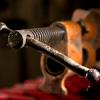Warren, you make a couple of interesting points. I don't need a router plane. The tables I'm currently building have many M&T joints (34 each, IIRC). I did the cleanup with a chisel and file. It was then that I decided that I wanted a router plane because, for a weekend woodworker like myself, it's far more accurate and repeatable. While the table joints are acceptable, I'm convinced that I would have done more consistent work is less time with a router plane.
I'm an entirely self taught amateur with no interest in doing this for a living. The downside is that I may never be able to dedicate the time it takes to master any facet of woodworking. The upside, though is that I have this incredible freedom to make exactly what I want, when and how it suits me.
I don't need a router plane but I think I'll enjoy fitting tenons with one more than I would with a chisel and file. I just want a less expensive one 

Originally Posted by
Warren Mickley

You don't need a router plane. You don't need a router plane. I was a cabinetmaker for years before I got one.
If you want to make tenons, learn to saw right to the line, clean up with chisel if necessary. Leaving extra just so you can clean up with a router is a big time waster; lots of extra set up time and work time. If you want to clean the bottom of a dado, use a chisel and a mallet. The chisel has no set up time and is much easier to sharpen.
-- Dan Rode
"We are what we repeatedly do. Excellence, then, is not an act, but a habit." - Aristotle





 Reply With Quote
Reply With Quote







